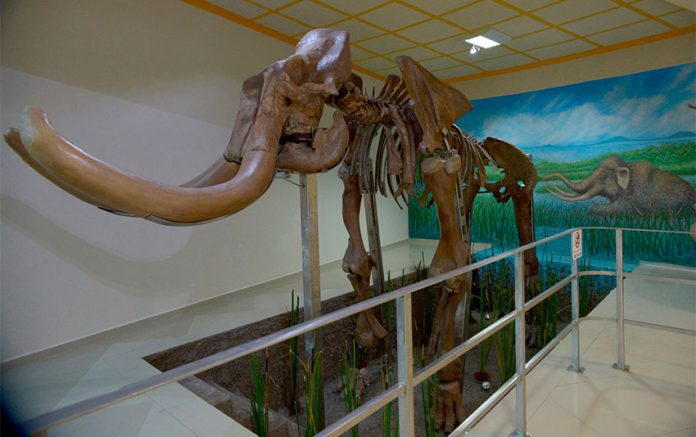The Mammoth Museum in Tultepec, México state, will be expanded to accommodate new remains found in 2019.
The two-story museum, part of the Víctor Urbán Velasco Cultural Center in the San Rafael neighborhood, doesn’t have enough space for more than 900 bones from at least 14 mammoths that were found on municipal land in Tultepec this year.
The municipal government is expected to allocate about 2 million pesos (US $105,000) to the expansion project in 2020.
Museum director Juana Zúñiga told the newspaper El Universal that the Tultepec government has given the green light for the project although its funding won’t be officially approved until February.
The Mammoth Museum opened in November 2018 but the idea to open it dates back to 2015 when drainage works in Tultepec unearthed a mammoth skeleton made up of more than 200 bones.
Local authorities wanted the remains to stay in Tultepec and struck an agreement to that end with the National Institute of Anthropology and History (INAH) in 2016.
The permanent exhibition The Tultepec Mammoth, a look to the past finally opened on November 29 last year.
Zúñiga said the exhibition aims to “open a window” to Mexico’s prehistoric past. More than 46,000 people visited the museum in the first year after it opened, she said.
The museum director said that visitor numbers increased after the announcement last month of the discovery of at least 14 mammoth skeletons although they are not yet on display.
“The excavation is still in process,” Zúñiga said, adding that the bones will also have to be cleaned and restored before they are placed on display once the museum is expanded.
“New agreements with INAH and [more] financial resources are also needed . . .” she said.
In addition to mammoth remains, bird and fish bones are on permanent display.
Currently on temporary display is a collection of photographs entitled Frozen Mammoths, which explains the process that was used to uncover remains of the extinct mammal in Siberia.
Entry to the Mammoth Museum, located about 40 kilometers north of central Mexico City, is free.
Source: El Universal (sp)
